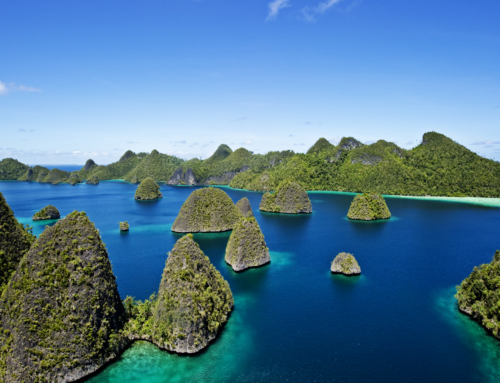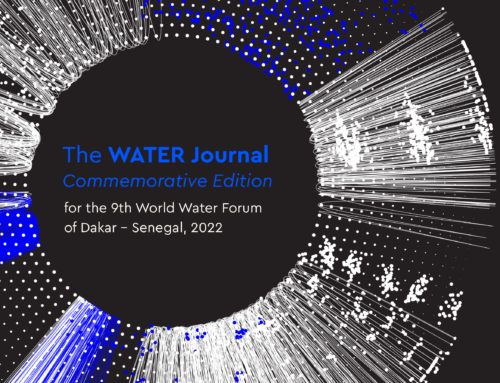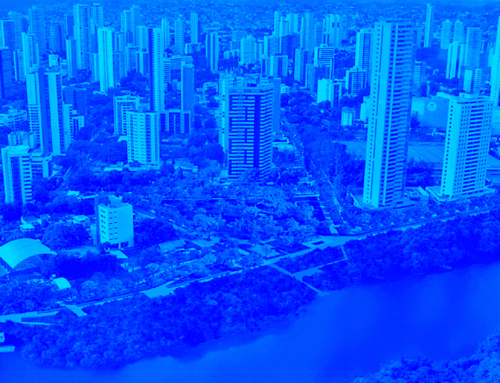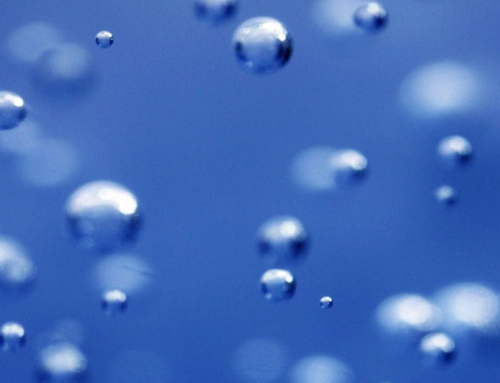A member of the IPWS since 2020, Brazilian researcher Leoni Bonamin has been attracting a great deal of attention because of her studies on ultradilutions of biologically active substances and their effects on living systems
On March 24th, 2o22, Brazilian researcher and professor Leoni Villano Bonamin accomplished another great feat in her respected career: as an International Panel on Water Structure (IPWS) member and guest editor, she launched a special edition of the Water Journal (Water – a Multidisciplinary Research Journal) – a prestigious multidisciplinary publication dedicated to original research on the molecular structure of water – at this year’s World Water Forum in Dakar, Senegal.
The almost Herculean task (of gathering avant-garde, unpublished articles from important authors around the world) reveals something of the professor’s tireless dedication to topics related to the nanostructure of water. Now at the head of several research projects as a full professor of undergraduate and graduate studies at Brazil’s Universidade Paulista (Unip), Leoni Bonamin – veterinary doctor from the University of São Paulo (USP), with a master’s degree and phD in Experimental and Comparative Pathology also from USP; a sandwich doctorate from the École Nationale Vétérinaire de Lyon; and a post-doctorate in Environmental and Experimental Pathology from Unip – is presently dedicated to studying ultradilutions of biologically active substances and their effects on living systems. Currently, among many other things, she is also the Scientific and Academic Director of the International Centre for Water and Transdisciplinarity (CIRAT), which occupies IPWS’ Executive Secretariat until 2024. It is no surprise that her avant-garde work has been attracting a great deal of attention in Brazil and abroad.
In this quick interview, Professor Leoni talks about her professional motivation and about the Panel’s role in expanding knowledge about the microstructure of water.
1 – How long have you been involved with research on the nanostructure of water? What led you to delve into this universe?
My interest in the nanostructure and microstructure of water was aroused in 2018, when I participated in the XIII International Science Conference – Physics, Chemistry and Biology of Water (or simply: Water Conference) – and what led me to this conference was my research career in the field of homoeopathy and high dilutions, beginning in 1997. The need to understand what happens when a substance is diluted and subjected to vigorous agitation – and how this generates extraordinary biological effects, to the point of being used as medicine – inevitably led me to want to understand the structural dynamics of water.
2 – How do you view the status quo of research and knowledge about the molecular structure of water over recent years? When did this knowledge begin to advance in a more significant way?
This knowledge has been building up over the last 20 years, largely driven by professor Gerald Pollack, from the University of Washington in Seattle, USA. In addition to the annual conferences, he is also the editor-in-chief of the scientific Water Journal, for whom we published the special issue launched during the 9th World Water Forum in March. At first, the simple idea that a liquid could assume any molecular structure seemed completely nonsensical, since the intermolecular bonds that occur between H2O molecules are very fleeting: they turn on and off in 10-15 seconds. From 1988 on, following the ideas proposed by Italian professors Emílio Del Giudice, Giuliano Preparata and Giuseppe Vitiello – and the mathematical demonstration of the plausibility of the concept of “coherence domains,” in which quantum electrodynamics principles were applied to the properties of water –, there was a major division, and many researchers went in search of experimental evidence of this concept. Nowadays, there is plenty of evidence that water is structured dynamically rather than statically. Such evidence can be demonstrated by relatively simple methods such as light microscopy – but there are still many unanswered questions on the subject. More and more research is needed.
3 – What does the International Panel on Water Structure formally represent for the advancement of knowledge about the molecular structure of water?
To me, thel Panel is a “scientific proto-society”: the first step to bringing together researchers in a formal way, under a logo, to articulate discussions and partnerships. In fact, this rapport already exists informally at the annual meetings organised by Professor Pollack. It is expected that, in the near future, it will be possible to organise a scientific society on the subject – thus, popularisation of this knowledge with greater representation in the scientific environment and, who knows, greater ease for the financing of these researches could become a reality.
4 – In which directions is this knowledge advancing?
It is advancing towards application in field situations such as agriculture, ecology, clean energy production, medicine etc. Understanding water and its properties, as well as the rational and sustainable management of these properties, can be an excellent tool for building more sustainable production chains and services that are less aggressive to people, animals and the planet. Such potential for practical application is in line with the concept of one health, as established by the United Nations’ Food and Agriculture Organisation.
5 – What are the next steps for IPWS in this continuous progress?
To consolidate partnerships and common projects among its participants. The subsequent steps, of course, may happen organically, naturally, over time.
6 – What projects are you involved with at this moment, professor?
With the understanding of the mechanisms of action of homoeopathic medicines, manufactured on the basis of high dilutions of known substances followed by succussion, or vigorous agitation.
*Professor Leoni Villano Bonamin is also a member (2022) of the Homoeopathy Thematic Committee of the Brazilian Academic Consortium of Integrative Health (CABSIn) and has a CNPq level 2 Research Productivity Scholarship since 2011. She also collaborated (1997-2015) with the University of Santo Amaro (Unisa); and was president (2002-2008) and vice-president (2008-2014) of the Groupe International de Recherche sur l’Infinitésimal (GIRI). She has been an associate editor of the journal Homoeopathy (Faculty of Homoeopathy-London / Thieme) since 2015, and a member of the editorial boards of the International Journal of High Dilution Research (LILACS-GIRI) and of Water – a Multidisciplinary Research Journal. She is an accredited researcher at the Homoeopathy Research Institute (HRI, UK) and a member of the Scientific Advisory Board of the Global Homoeopathy Foundation (GHF, India), as well as an organizer of the educational website www.biodiluitons.com.




